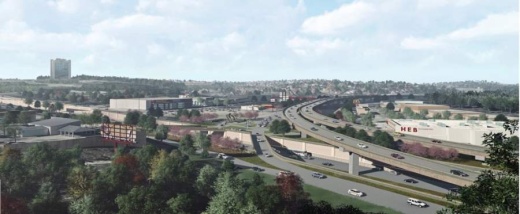The Texas Transportation Commission, the governing body that makes funding decisions for Texas Department of Transportation projects, voted unanimously to award a $677.1 million contract to Colorado River Constructors as the design-build contractor for the Oak Hill Parkway project. The project aims to alleviate congestion at the Y at Oak Hill, where Hwys. 290 and 71 meet.
According to Colorado River Constructors' website, the company is comprised of two design-build firms: Fluor Enterprises Inc. and Balfour Beatty Infrastructure Inc.
The firm is providing construction management for the 183 South project currently in progress, a $743 million undertaking by the Central Texas Regional Mobility Authority to add toll lanes and improve nontolled lanes along US 183 through East Austin.
According to TxDOT staff, the next steps for the Oak Hill Parkway project include executing the final contract this summer. Work could begin late this year, and the state transportation agency anticipates completion in 2025.
The project has faced stiff opposition from neighborhood residents and community advocates. In July 2019, Austin-based environmental advocacy group Save Our Springs Alliance filed a lawsuit against TxDOT and the U.S. Fish and Wildlife Service, citing concerns about potential impacts to two species of endangered salamander that are found in nearby Williamson Creek.
Cynthia Wilcox, president of the Oak Hill Association of Neighborhoods, was one of the residents who spoke up at the April 30 commission meeting to voice continued opposition to the project. She argued that COVID-19 made the state’s sources of revenue uncertain and that residents have been unable to participate in the public comment process because of stay-at-home orders. Therefore, she said, the commission should wait to move forward.
“This is not the time to make big decisions and get locked into expenditures of tax dollars on a 20th-century design,” Wilcox said.




